The Problem with All-Positive Dog Training

In my decades of filming dog sports, starting a GSD kennel, and now managing Leerburg.com and producing online courses, I've encountered several people from various schools of training. The controversial topic of "corrections in dog training" comes up often. Here, I will tell you a little about my experience in dog training and why I feel the need to talk about this subject.
There are three types of all-positive trainers:
- Those who emulate PetSmart. They run all-positive training courses and don't mention corrections. These kinds of people know better but choose to cash in on the image of all-positive training.
- There are all-positive trainers who love animals and push the all-positive concept but simply lack the experience to know better.
- There are all-positive trainers who compete and win in various dog sports. These competitors do an excellent job of desensitizing their competition dogs to ignore the distractions their dogs will face in their respective dog sport.
I only have issues with those in the first two categories and I will explain why in a minute.
I respect and admire most of those trainers in the third category because they know that 99.999% of every pet dog out there will require a "distraction/correction phase" at the end of a training program. The only people from this third category I don't respect are those trainers who tell others they can train any pet dog using their all-positive methods and never have to correct the dog. It's a scam.
Whose Advice Are You Listening To?
For the past 20 years, I have used the following autotext when I respond to new trainers who have been influenced by "old wives tales" like all-positive training. It goes like this:
"You are always going to be exposed to people who offer advice on how to train your dog or fix your dog's behavioral issues. The problem is that most of these people don't have the experience to offer sound advice. This results in a lot of bad dog training information being passed out."
Point is, you are always going to get other people's opinions on how to train your dog. You only need to ask your neighbor, your friends, or even your vet. Note: Vets are not dog trainers. They are healthcare providers. 99.99% of these people are well-intended but lack the experience that is needed to offer sound training advice. They are more likely to offer "old wives' tales" on dog training rather than sound training advice.
In many circles today, correcting a dog during training has become politically incorrect. Frankly, those are circles I don't care to be part of.
Companies like PetSmart are known to fire instructors from their "all-positive trainer classes" if that person talks about corrections during a course. That's info from one of their trainers, not me. That trainer told me that "PetSmart is only interested in selling training courses and not in providing accurate training information."
The problem with all-positive training is that there will come a time with every dog (and usually when the dog is off-leash) when the distractions that dog faces are more interesting to the dog than the high-value reward the handler is offering for compliance to a known command. At that point in time, that dog needs to learn that there are consequences for not following directions from the handler.
Controversial subjects like this attract flies, so before I get into the meat of why corrections are needed, let me talk about my experience in dog training.
I am 66 years old. I have owned and trained dogs my entire life. Back in the 1960s, I got the bug to really learn how to train. I read every book I could find and trained daily. I trained our family dogs and our neighbor's dogs.
I wanted to become a vet so during college, I studied pre-veterinary medicine (which is how I ended up with a minor in chemistry). I worked in a vet clinic in La Crosse, Wisconsin. That clinic was also the dog shelter for the city of La Crosse. On Saturdays, the vet killed shelter dogs. I couldn't handle that and it didn't take me long to realize I would rather train dogs instead.
I went to my first serious dog training seminar in 1974 and from that point on, I never looked back. I can't count the number of seminars, the number of trips I made filming dog training videos, or filming dog competitions over the last 40 years.
I produced my first dog training video in 1982. My website went on the internet in 1994. We currently have the largest dog training website on the internet with over 1500 streaming videos and thousands of pages of training content. To my knowledge, there isn't another website that is even 20% the size of Leerburg.com.
My only point in mentioning this is to establish the fact that I have been deeply involved in dog training my entire life. Unlike a lot of all-positive dog trainers, this is not my first rodeo.
Becoming a professional dog trainer is a never-ending evolution. Over the past 50 years, I have evolved into a "balanced reward-based dog trainer."
Balanced Reward-Based Training
A well-balanced trainer uses high-value rewards in the learning phase of training to teach behaviors. In my case, I always start with marker training and high-value food rewards. I have written extensively on training with markers which you can read all about from my article, The Power of Training Dogs with Markers.
The "balanced" part of a reward-based system simply means that we will introduce a dog to corrections once it generalizes a command.
It is important to note that the purpose of a correction in dog training is not to punish a dog for inappropriate or bad behavior, but rather to change a dog's behavior.
That is a subtle but very important distinction.
Many inexperienced and/or new trainers fail to understand that different temperament dogs require different kinds and levels of corrections.
Using remote collars and prong collars on dogs that may only need a verbal warning to get a behavior change is abusive. On the other hand, that same dog may require a remote collar or prong collar correction to get a behavior change when faced with a strong distraction.
These are the absolute basics you need to understand if you want to be a "balanced reward-based dog trainer":
- Understand varying temperaments in dogs
- How to motivate and build drive in dogs
- How to manage levels of distraction along with what types and levels of correction is required for a specific dog
Dogs, like people, are individuals. A correction that results in a behavior change for one dog may not have any effect on another dog. Simply withholding a food reward or toy reward for many dogs will produce behavior changes. On the other hand, an off-leash dog with high drive in the presence of strong distractions may require stiff remote collar corrections to get behavior changes.
A dog's temperament shouldn't be the only factor to take into consideration when it comes to corrections. You also need to understand the environment the dog is in and its distractions. Only after that can you ask yourself, "What kind of correction is required to change my dog's behavior?
For me, the true art of dog training means being able to control my dog in a highly distracting environment. To accomplish that, the trainer needs to be able to produce a dog that understands and respects the consequences of not following a known command. The trainer who can do that and yet, still have a strong bond with his dog is what I would call a great trainer.
With all this said, there are two ends of the correction spectrum. At one end are trainers who consistently give ineffective corrections that don't change behavior. They nag their dog with corrections that have little to no effect on the dog. Ineffective corrections desensitize a dog to corrections. They simply teach a dog that they don't need to pay attention to the handler.
At the other end of the correction spectrum are those trainers who feel they need to punish a dog with a correction. These handlers can train a dog but they never develop what I consider is a deep bond with their dog.
All-Positive Dog Trainers Just Don't Get It
Now back to these all-positive trainers. They have blinders on and they just don't get it. They don't understand that dog sport competitors who train with all-positive methods need a very specific type of dog. They need dogs that are compliant and have a very strong food or toy drive.
If these same trainers were given 10,000 average family dogs, they would be lucky to be able to train and compete at a high level with one of those dogs. All-positive methods only work with specific dogs and are usually trained from a very young age. I would be surprised if these trainers could produce your average family pet with consistently compliant off-leash obedience.
With that said, I'm certain that not one all-positive trainer could ever have trained and certified any of the police service dogs that I handled in the 10 years I was a K9 officer.
In fact, it's safe to say that these all-positive trainers could never train and certify one single patrol dog anywhere. They simply couldn't do it. But they will lead anyone who will listen to believe they could. The people who claim these things are simply trainers who either lack the experience to know what they are talking about.
There was a time where all-positive trainers would point to SeaWorld and use the dolphins and killer whales as proof of their system. They pontificate about how impossible it would be to give a killer whale a correction.
But these dolphins and killer whales are forced to live in very small pools that have zero distractions. Taking human interaction and withholding food rewards from an animal that lives in social isolation is in and of itself, a pretty strong correction.
I stand with those folks who think what SeaWorld does to their animals is cruel and unusual punishment. How they force these animals to live is disgusting. Their claim to be using pure operant conditioning is a scam to the American public.
Dog Sports vs. The World
So let's make this very clear. I have a lot of respect for reward-based competitors who go out there and win in their respective dog sports. I have friends who do this. But my friends don't try and tell pet owners that they should train their family dogs or working dogs without corrections.
These trainers know exactly what they're getting into in their respective sports. They understand the environment, their dog, its reinforcement history, and so on and so forth. Dog sports have a set of rules that make the event predictable. These trainers know how to use all-positive training in this environment.
But when the rest of us are facing the rest of the world, it's obvious that things aren't so predictable. You can't control your environment all the time. The rules are vague in the real world and there are various outliers no one can ever be prepared for.
What is a correction?
Something else to consider is how we think about corrections. What a human thinks is a correction may not be perceived so by a dog. My dogs simply thrill over the prospect of having their prong collars go on because it means we're going for a stroll. The prong collar is simply there to ensure that my 85-pound dog doesn't pull me down the street. He walks like a dream because the pressure was taught correctly during "leash-pressure training". If you want to learn how, view our DVD and our course on leash training.
I also want to reiterate this statement:
The purpose of a correction in dog training is not to punish a dog for inappropriate or bad behavior, but rather to change a dog's behavior.
Corrections are too often misunderstood or abused. It's important to understand this subtle distinction. Your motive should be to deepen your bond with your dog, not weaken it.
Lastly, if you are one of those people from the second group—those people who love dogs but don't have the experience to realize all-positive training systems don't work—I would ask you to rethink your position. Be honest with yourself. Know what distraction levels really affect your dog. You can manage your dog by keeping it on-leash and away from these distractions, but what would you do if your dog accidentally got off-leash in the face of these distractions? What could happen to your dog in an uncontrolled environment? What could be the consequences?
Personally, I want my dogs to learn to mind me all the time. That means off-leash, on-leash, outside, inside, with distractions, without distractions, etc. Education and discipline is required for this kind of training but it is often polluted by propaganda about all-positive training. I can't force you to use one method over the other but I can hope you at least now have a clearer view of the motives behind these different dog training methods.





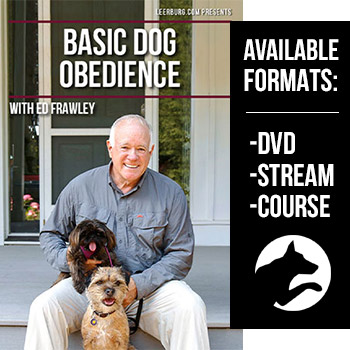
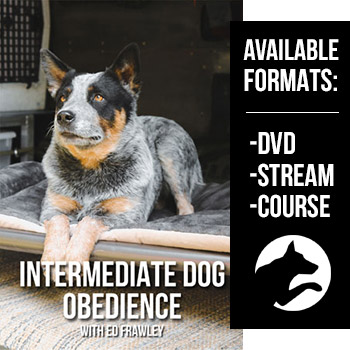

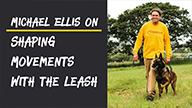
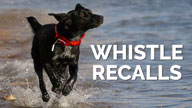
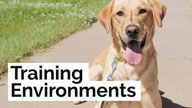
Ask Cindy.